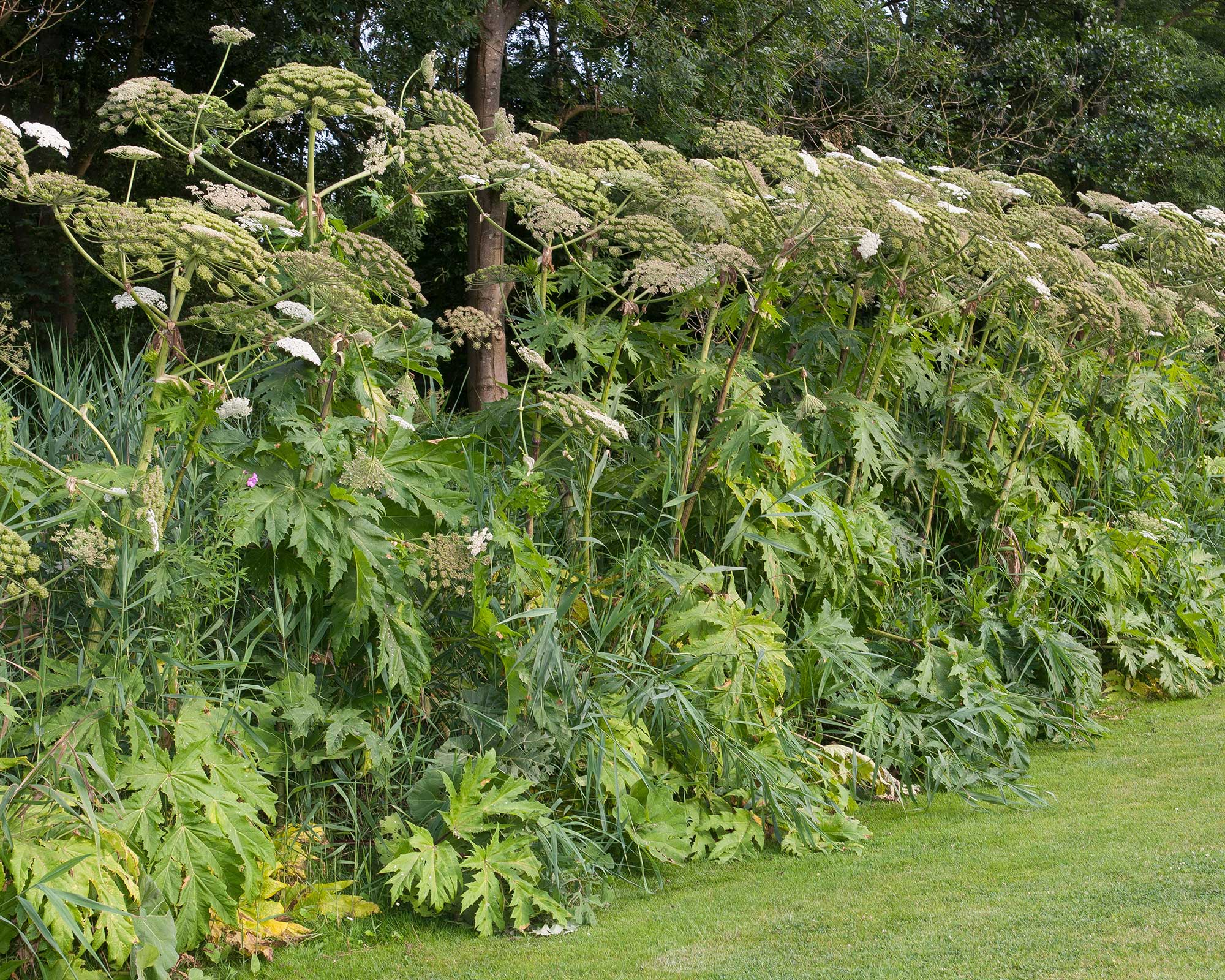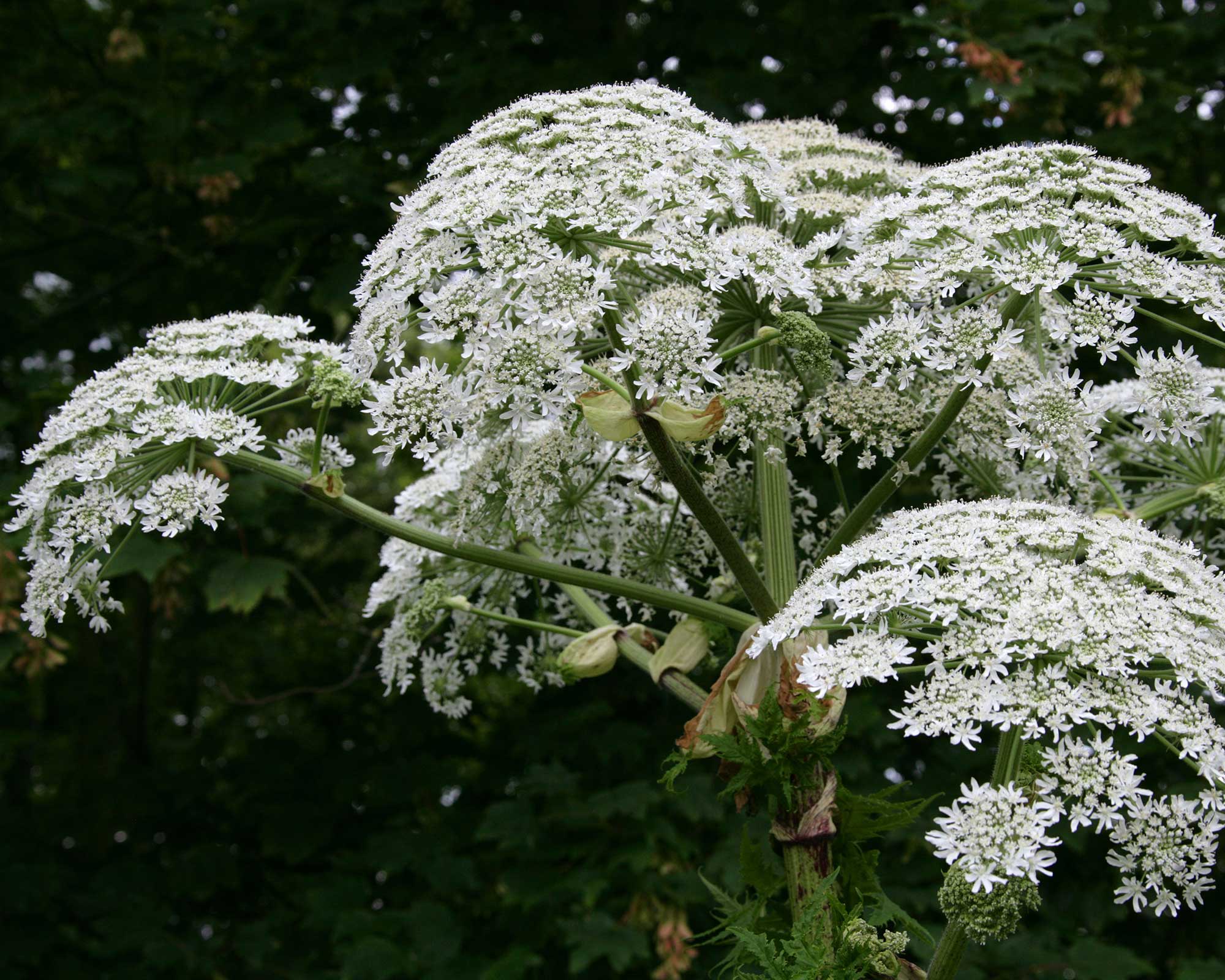Giant hogweed: how to identify and kill this toxic plant
Knowing how to get rid of giant hogweed is important for a safer yard – we've got all the tips you need


Giant hogweed – as architecturally attractive as it may be – is not a plant that you want in your backyard. Originating from the Caucasus Mountains, it was first brought to the US and UK as an ornamental addition to borders. However, its harmful nature quickly became apparent.
In terms of learning how to get rid of weeds, this is one intruder that you'll definitely want to know how to eradicate. Similarly to Japanese knotweed, giant hogweed is incredibly invasive. It now grows wild, often lining riverbanks and roads, out-competing native species. This is a problem in itself, but giant hogweed also happens to be dangerous when touched. Basically, the sap causes a reaction called phytophotodermatitis. This damages your DNA and changes the way your skin protects itself from sunlight, as explains Healthline. The results are burns, blisters, and scarring that can reoccur over a long period of time. If you get it in your eyes, the consequences are equally, if not even more, serious.
But if you spot it in your garden, don't panic. With the right approach, a giant hogweed invasion can be dealt with safely.
How to identify giant hogweed
Giant hogweed looks quite similar to cow parsley. It also looks – unsurprisingly – like common hogweed. But there are some differences to look out for:
- Firstly, giant hogweed is, as its name suggests, very tall: up to around 16.4ft (5m). This is much taller than common hogweed, which only grows to around 6.6ft (2m) maximum.
- Giant hogweed has thick, green, bristly stems with an often mottled-purple appearance.
- It also has white, upwards facing flowers in summer, arranged in umbels which can be as large as 2ft (60cm) across.
- The jagged leaves are equally huge – up to 4.9ft (1.5m) wide and 9.8ft (3m) long. These are very different to the delicate foliage of cow parsley.

Giant hogweed is, to no surprise due to its name, incredibly tall
How to get rid of giant hogweed: 3 approaches
Once you've spotted giant hogweed in your garden, the most important thing to remember is to not – under any circumstances – go near it without proper protection. Gloves, long sleeves and pants, safety glasses and a face mask are all advised, with long hair tied well back. Don't forget that cut plant debris, contaminated clothing and tools are potentially hazardous too, as says the RHS. If you've read our guide on how to get rid of poison ivy, you'll know that the same precautions should be taken when tackling that weed, too.
Also, bear in mind that each plant can produce up to 50,000 seeds. You'll want to take action before these get a chance to spread around your garden.
1. Call in the experts
Most experts would recommend not tackling giant hogweed yourself, due to the potential risks. According to Healthline, you can, instead, report it to the department of conservation in your region or state. 'There are different procedures in each state. For example, New York has a giant hogweed hotline you can call,' they add.
'In general, you can find information on how to report the plant on each state's department of conservation or environmental services website.'

A large giant hogweed infestation like this should be removed by experts
2. Dig it up
However, if you are dead set on trying to remove giant hogweed yourself, and only have a small problem on your hands, you can try pulling or digging it up. The RHS suggests to do this in May, when the plants have grown tall but are yet to produce their flowering spikes.
It's easiest to do so when the ground is moist. Remember that the dangerous sap is also found in the roots, so take caution.
Continue to monitor the area, repeating the process when necessary until no new growth appears.
- Need to know how to kill bindweed, too? Our guide is full of practical tips.

Be sure to tackle giant hogweed before its flowerheads go to seed
3. Use a commercial weed killer
Although weed killers aren't great for wildlife gardens, they can be very effective. Always use and store them carefully, according to the instructions.
For giant hogweed, find an appropriate product that states giant hogweed on the label. This will generally be a systemic, glyphosate-based weed killer, which will tackle the roots rather than just the top growth. These normally need to be applied to the leaves in late spring, then again in late summer if necessary, but check the instructions first.
As the RHS points out, it is worth noting that giant hogweed likes to grow near bodies of water, such as streams or ponds. If this is the case in your garden, it's best to use an alternative approach: the chance of weed killer entering waterways should always be avoided.

A commercial weed killer can be effective against giant hogweed
Can you mow giant hogweed down to kill it?
Even with one of the best lawn mowers, giant hogweed should not be tackled in this way.
There are three main reasons for this. Number one: doing so can spread the dangerous sap into the air. Number two: it's not hugely effective – in fact, it can encourage new buds to form on the stalks quickly. And, number three – it's an easy way to spread the seeds, which will only exacerbate the issue.

Take action as soon as you spot giant hogweed to keep your backyard safe
Is giant hogweed toxic to dogs?
It's not just humans that giant hogweed can harm. The plant can affect our four-legged friends – both canines and felines – in the same way: another reason why it's best to take action if you spot it on your plot.
Want to know more of the most poisonous plants for dogs and plants that are poisonous for cats? Our guides have all the info you need.
How do you dispose of giant hogweed?
Like Japanese knotweed, giant hogweed is a controlled waste. This means that it can't be put in your general trash, nor can it simply be dropped off at your local tip unless it has the correct licence to deal with it. In some regions, it is also against the law to cause giant hogweed to spread in the wild. This is another reason why it's easiest to just call in the professionals to tackle an infestation.

The garden was always a big part of Holly's life growing up, as was the surrounding New Forest where she lived. Her appreciation for the great outdoors has only grown since then. She's been an allotment keeper, a professional gardener, and a botanical illustrator – plants are her passion.
